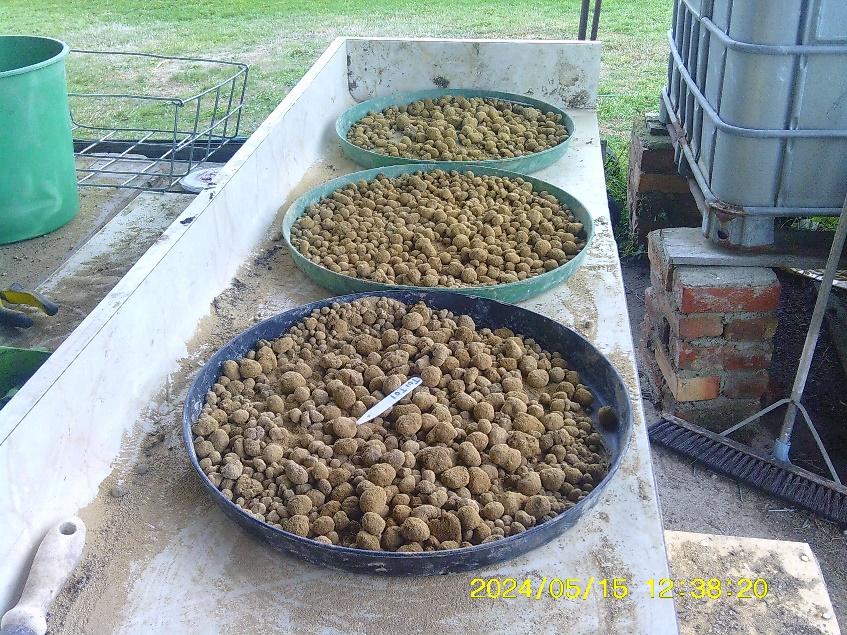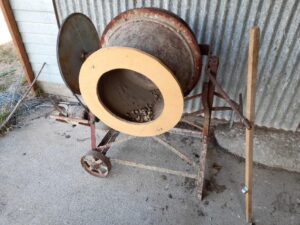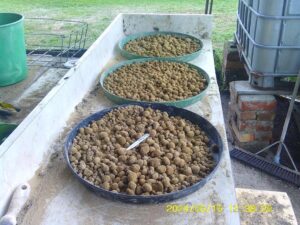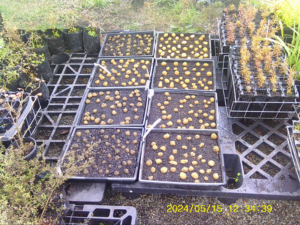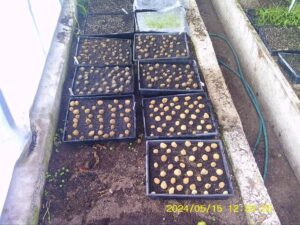Seed Ball Trials
Seed Ball Trials
Following successful experiments using grass seed, trials are now underway, using a variety of native seeds, to see if locally manufactured seed balls would be a viable option for direct seeding rather than, or in addition to, normal plant raising methods.
For this trial, a modified concrete mixer is used to form small balls that contain the seeds in a growing medium that are then coated in clay powder to provide a stable pellet suitable for distribution.
Procedure
Carex Virgata, Swamp flax, Totara, 7 finger, Toi Toi, Ake Ake and Kowhai seed were sown in seed trays in the greenhouse as per normal to check germination. (The choice of seed was based on availability of sufficient quantity for the trials.)
40 seed bombs of each species are spread out on potting mix in punnet trays in both the greenhouse and shade house.
In each trial 20 small (approx 5-8mm diameter) and 20 large (approx 10-15mm diameter) balls were used.
The mix for the balls made to date is;
2 parts sieved potting mix
1 part powdered sandy silty clay,
1/2 part re-hydrated, sterile, sheep and poultry manure pellets,
1/20th part dolomite.
The choice of mixture is based on the premise that the potting mix and clay is a reasonable analogue for Moutere soils. The manure adds nutrients and is a good sticky binder and the dolomite adds magnesium for aiding root development. No fungicide or insect/bird repellent was added. Bait boxes for rodents are deployed in the greenhouse.
The seeds were added to the mix dry and tumbled in the mixer with water sprayed in until balls formed.
When the balls were sufficiently large they were removed and rolled in more powdered clay and sun-dried. Batch sizes for the trials were typically around 6 – 7 litres.
Seed quantity used per batch was normally around 100ml. (1/4 of a jam jar.)
A further trial with Manuka is planned over the next week or so as it is one of the most common colonizer species. Seed is currently being prepared.
To test for shelf-life of the seed in the balls, 40 of each variety have been set aside in cool storage for 3 months.
Results
To date, of the seed trays grown in the greenhouse between January and March, all have seeds that have germinated, only the Totara, which were not sown until May, have not yet emerged.
To date there is no sign of rodent or bird predation in the shade-house and field trial plots.
As the seed balls were produced from late April to mid-May it is far too early to indicate any measure of success.

